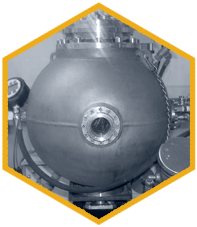Dusts formed from combustible solids pose special fire and explosion risks in the workplace by virtue of their high surface-to-volume ratio and intimate inclusion of air between dust particles, and have ignition and burning characteristics that may differ significantly from the parent bulk solid.

Quantifying the ignition and explosion properties of dusts and dust clouds is an important part of a hazard review of areas where combustible dusts are found.
Understanding the combustion characteristics of flammable liquids, vapors and gases is an essential aspect of a process safety review and regulatory compliance. Combustion properties of importance include: